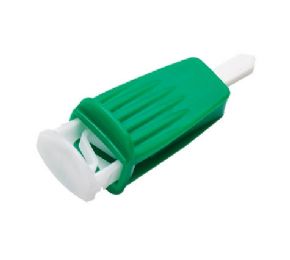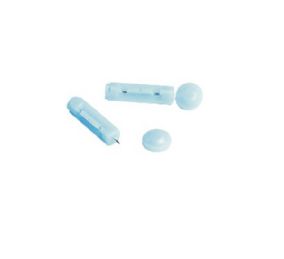





















.jpg&newheight=260&quality=80)
What is a Lancing device?
A lancing device, or lancet, is used in diabetes testing to monitor blood sugar (glucose) levels. It can be used on a fingertip of most individuals, or the heel of an infant. Its purpose is to capture a drop of blood that can be analyzed in a blood glucose monitor. A blood lancet should be sterile and come with a handle so it can be firmly grasped during use. A handle with good finger grips will help ensure the lancet does not slip.
A spring mechanism can be an important feature for this device to make it easier to use. Most are adjustable so the user can set the lancet at the precise level for penetrating the skin. The goal is to use the least amount of force necessary to collect a blood sample. A lancet must puncture the skin deep enough to obtain a proper sample for testing purposes. Those living with diabetes must test their blood glucose levels throughout the day, so choose the best lancet for individual needs to collect the right amount of blood with minimal discomfort. Many with diabetes find it helpful to use different spots on the fingers or arm to help reduce discomfort and calluses on the fingertips.
What is a Diabetic Test Strip?
A diabetic test strip is one of the items needed in order for those who have diabetes to self-monitor their blood sugar levels to manage and control the diabetic symptoms. This diabetic test strip is disposable for safety reasons. When blood is drawn into the strip, a chemical on the strip reacts with the sugar, or glucose, in the blood. The blood sugar test strip is then inserted into a glucometer which calculates the level of sugar in the blood. The results are typically shown on the display of the meter within a few seconds.
Some test strips come with a special code which indicates the characteristics of that batch of strips since they can vary from batch to batch. This code enables the glucometer to be calibrated to that particular batch. If it is not calibrated properly, the results may not be accurate. So the user does not have to put in the code, some strips have the information encoded on the test strip itself. Normally, self-monitoring tests are done before and after meals, and at bedtime, but should be determined by a physician. The criteria for too high or too low blood sugar ranges need to be discussed with a doctor, also. This way the user will understand and know what to do for different levels of glucose.
For example, if a blood glucose level reading is low, the user can handle it right away by ingesting sugar items, such as pop, juice, honey, raisins, or maple syrup as directed by a doctor. After waiting 15 minutes, a glucose test can be taken again. If the reading is too high, an individual can walk around for 15 minutes before retesting.
What is a Urine Test Strip?
A urine test strip is a paper strip with embedded pads that are sensitive to sugar, or glucose, in an individual’s urine. When a strip is dipped into a urine sample, the pads react to the urine. This reaction changes the color of the pads to indicate the amount of glucose that is present in it. This gives a rough estimate of glucose levels in the blood. This type of strip is usually used to screen those who may have diabetes, or to monitor glucose levels in those with diabetes. It is important to know how to read them properly because the color change can be subtle. The individual must be good at distinguishing color and also read it in good light to see it correctly. A urine test strip shows what the blood glucose levels were several hours ago, when the body flushed excess glucose through the kidneys.
Rehabmart is pleased to carry a wide variety of superior quality lancets and test strips for blood and urine glucose testing from esteemed medical vendors including McKesson Medical-Surgical, Independence Medical, Medline, and LSS.
Hulet Smith, OT
Rehabmart Co-Founder & CEO
lb